The bow of a boat is its front section, designed to cut through the water as the vessel moves forward. It often features a pointed or curved shape to reduce resistance, improve stability, and enhance speed while helping the boat ride smoothly over waves and rough conditions.
Parts of a boat Bow - Stern - Starboard - Port
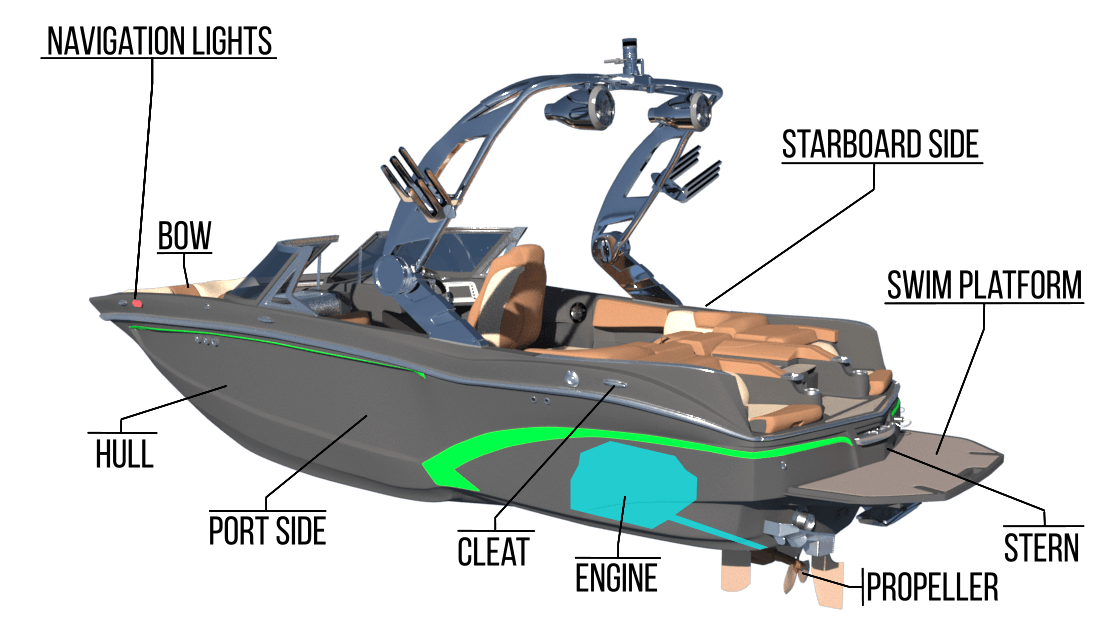
Bow of a boat
Stern of a boat
The stern of a boat is its rear section, opposite the bow. It’s where the engine, rudder, and transom are usually located, providing propulsion and steering control. The stern’s design affects the boat’s stability, handling, and wake, and often includes seating, swim platforms, or access ladders.
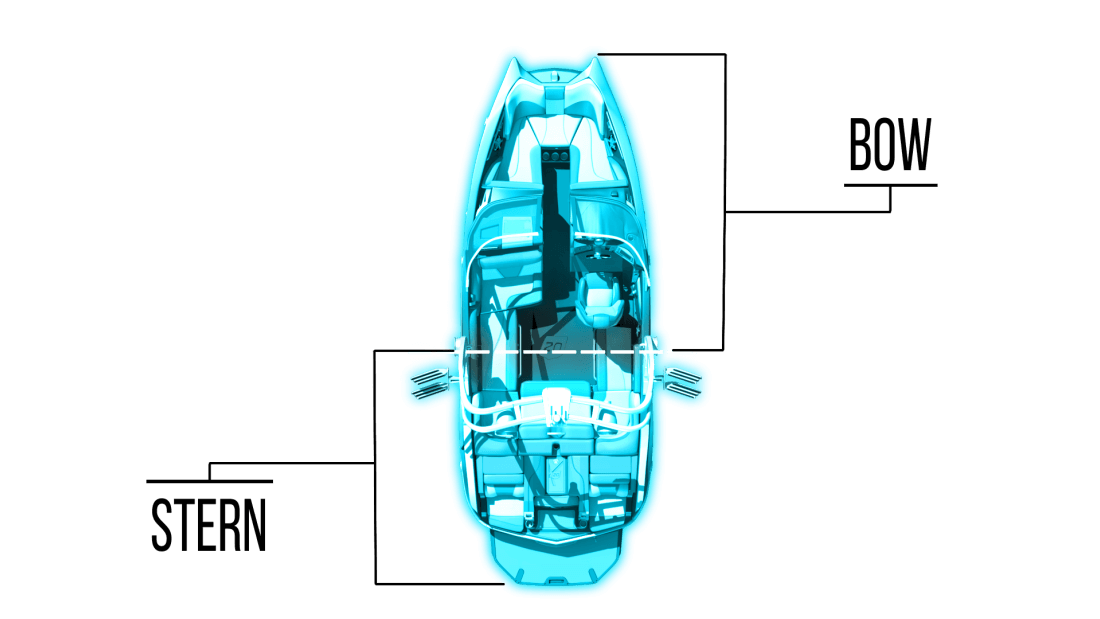
Starboard side of a boat
The right side of a pleasure craft when looking forward. Many centuries ago, ships were always moored on the left side; the helm was on the right side and would have been a hinderance while mooring. More information on starboard side.
Port side of a boat
The left side of a pleasure craft looking forward. More information on port side.
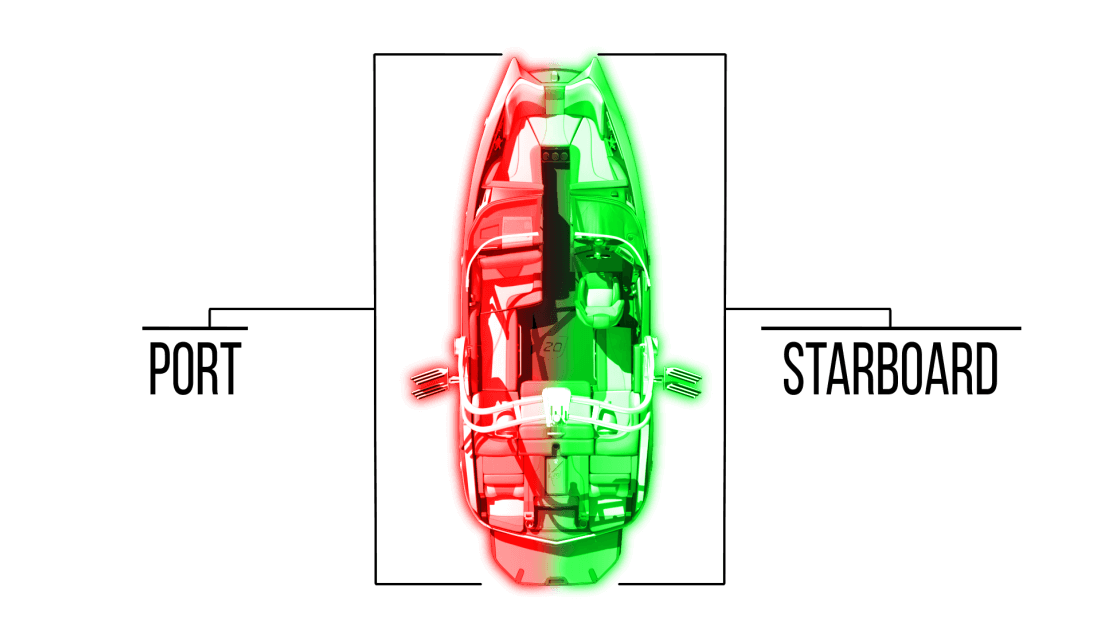
Boat hull
The main body of a vessel from the deck down. It does not include rigging, superstructure, machinery, or equipment.
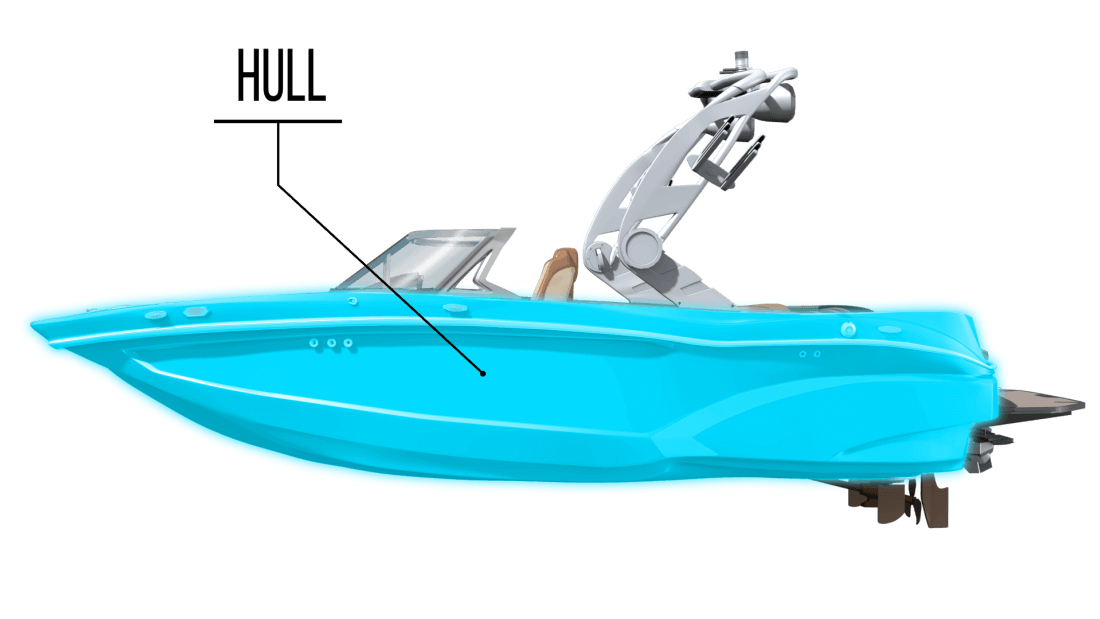
Waterline of a boat
The line marked on the hull of the vessel that separates the submerged section of the vessel from the section above the water level. The waterline must never be submerged. If it is submerged, the vessel has exceeded its maximum load capacity. Furthermore, if this line is lower on one side, it means that the load is unevenly distributed on each side of the vessel. These two situations represent a danger for the safety of the passengers as well as to the pleasure craft.
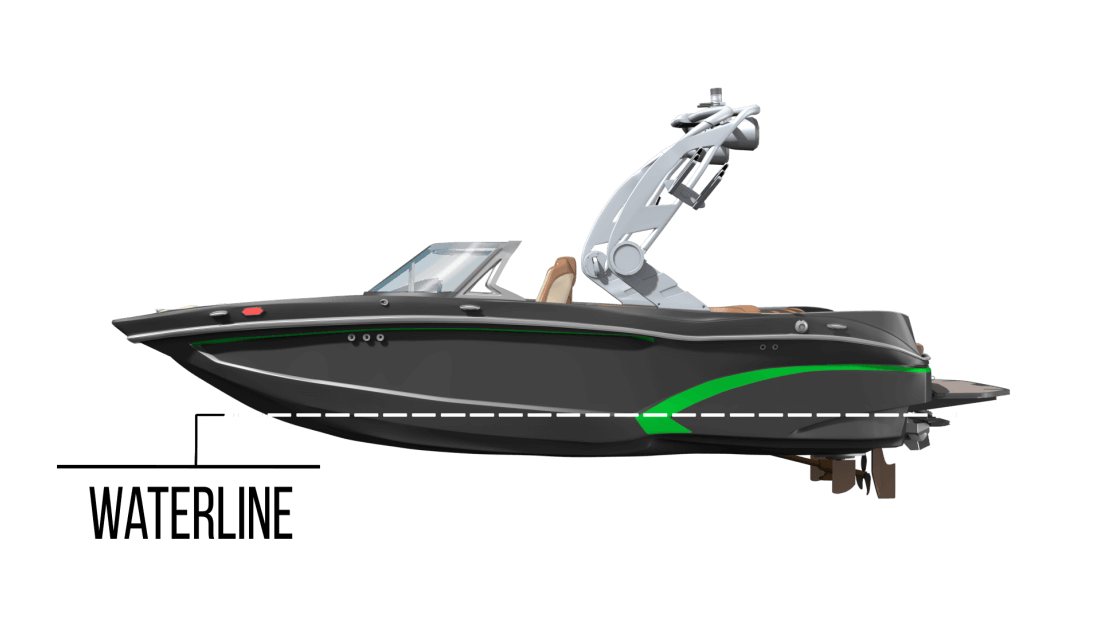
Draft of a boat
The depth of water, which a pleasure craft requires to float freely. It is, therefore, necessary to have deeper water than the draft of the pleasure craft, so that it may easily float, otherwise it may run aground.
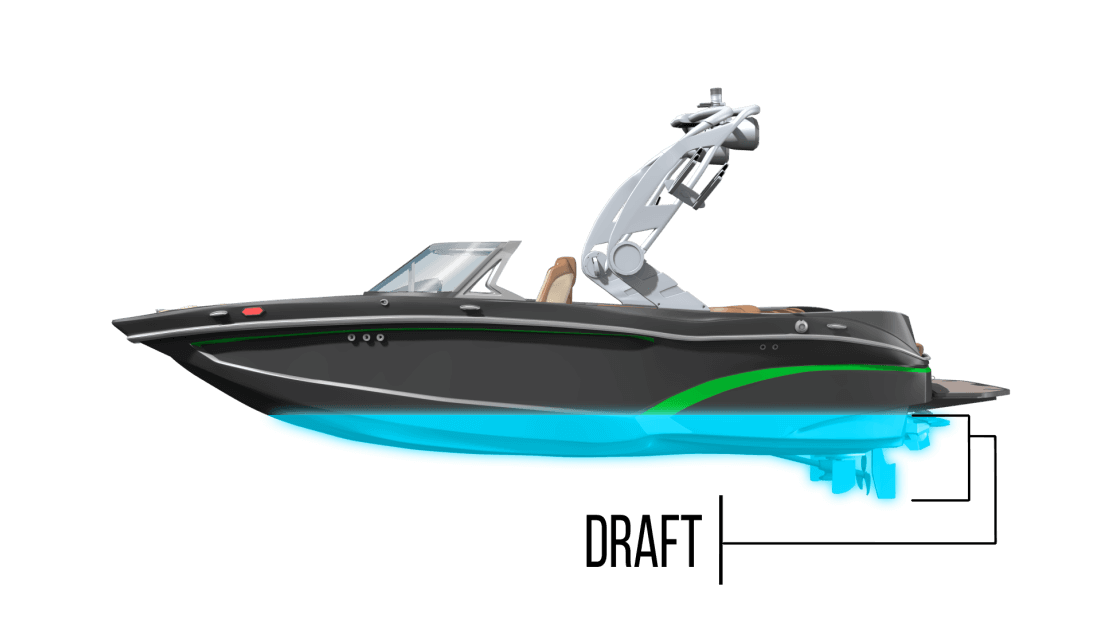
Freeboard of a boat
The distance from the waterline to the upper deck level, measured at the lowest point of sheer, where water can enter the boat or ship.
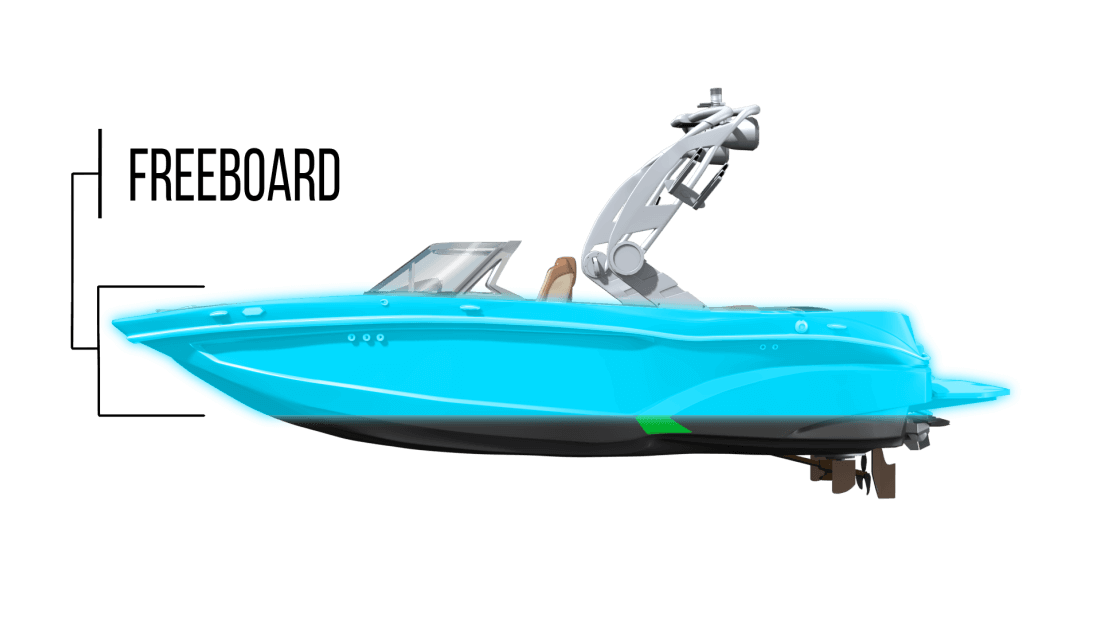
Propeller
A propeller is a rotating device with blades that converts an engine’s power into thrust, pushing a boat through the water. As the blades spin, they create pressure differences that move the vessel forward or backward. Propellers are essential for speed, maneuverability, and efficient propulsion in power-driven boats.
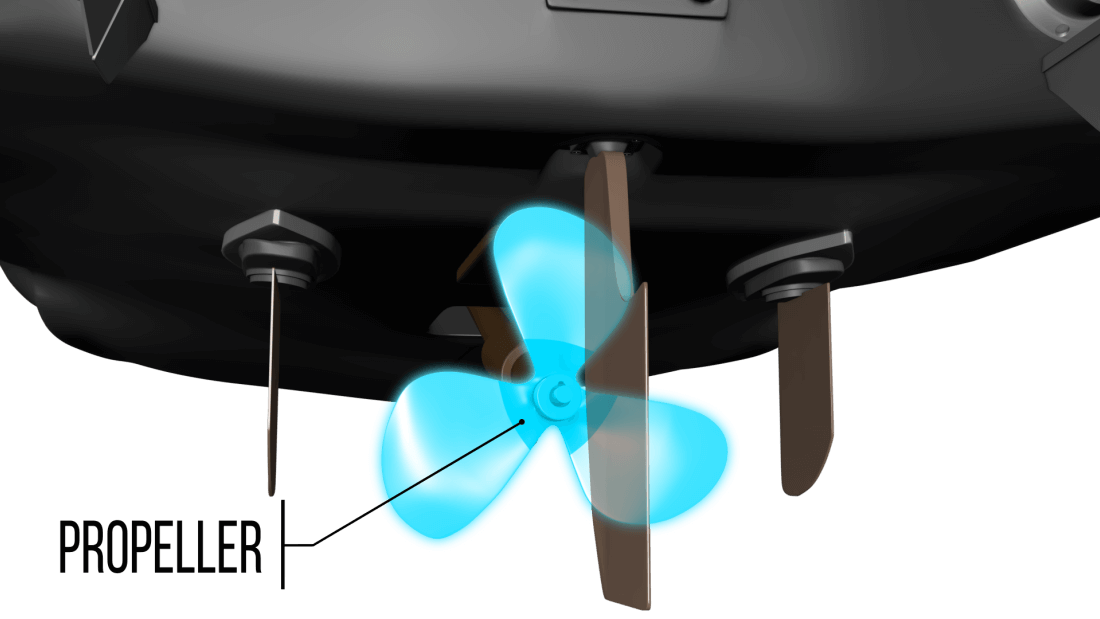
Rudder
A rudder is a flat, movable blade located at a boat’s stern, used for steering. When turned by the helm or tiller, it redirects water flow, causing the vessel’s bow to change direction and helping maintain course or execute turns.
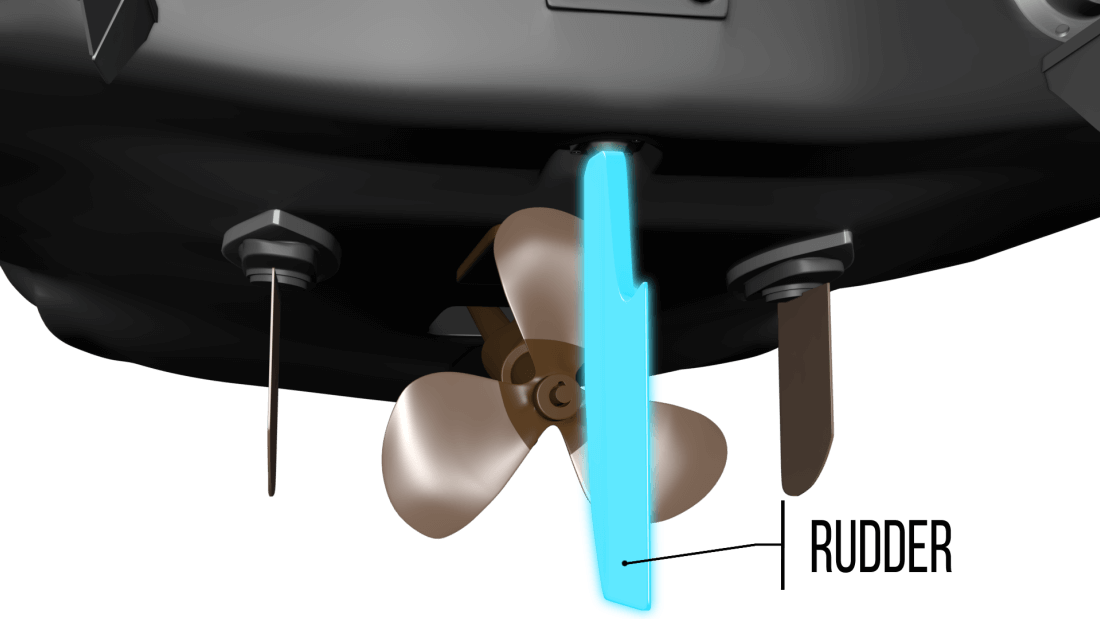
Transom
The transom is the area of the boat where the motor is attached. The transom is located on the stern of the boat.
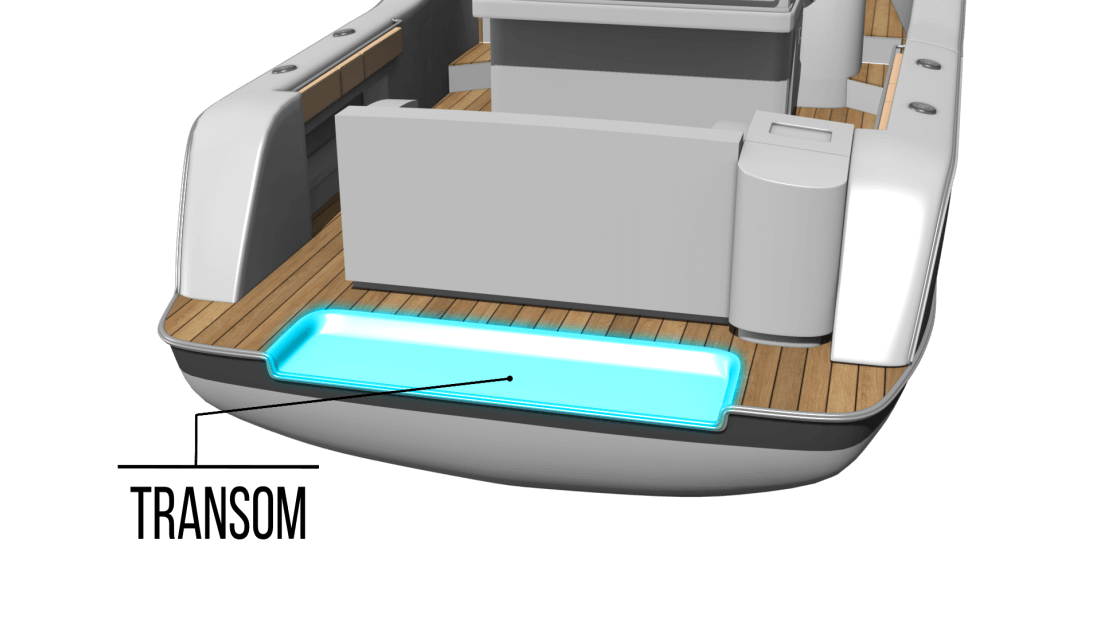
Gunwale
The gunwale, is the top edge of the hull of a ship or boat.
What is the difference between gunwale and gunnel?
With the frequent pronunciation of 'gunnel' (similar to funnel), it has now become an accepted alternate spelling, reflecting the evolving language usage.
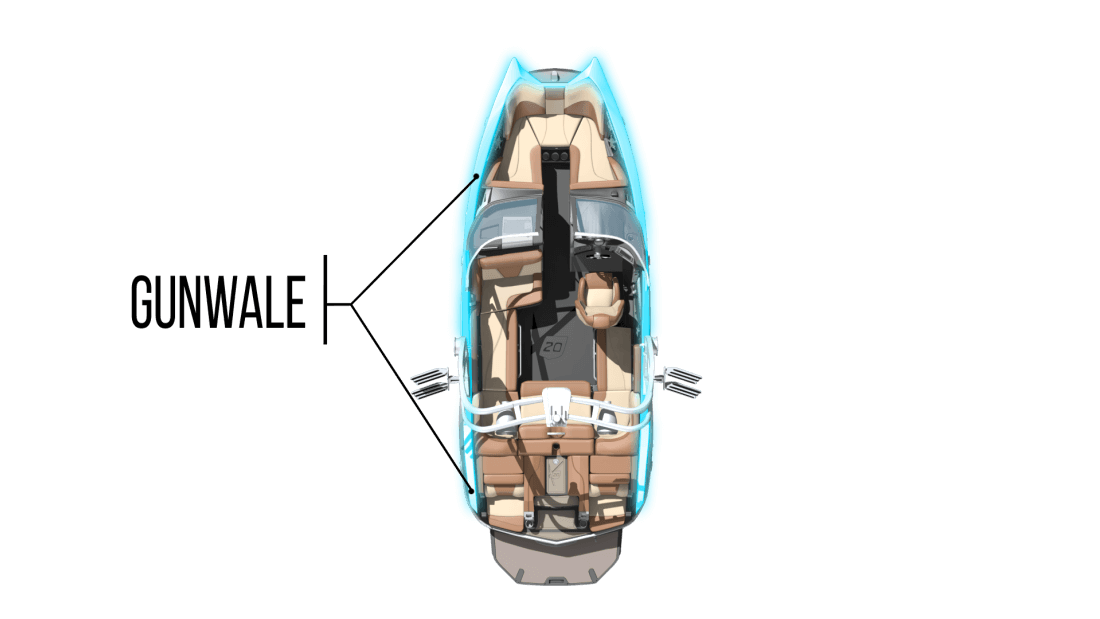
Cleat
A cleat is a sturdy metal or nylon fitting on a boat or dock used to secure ropes or lines. It typically has two projecting arms around which a line is wrapped in a figure-eight pattern to hold the vessel in place safely.
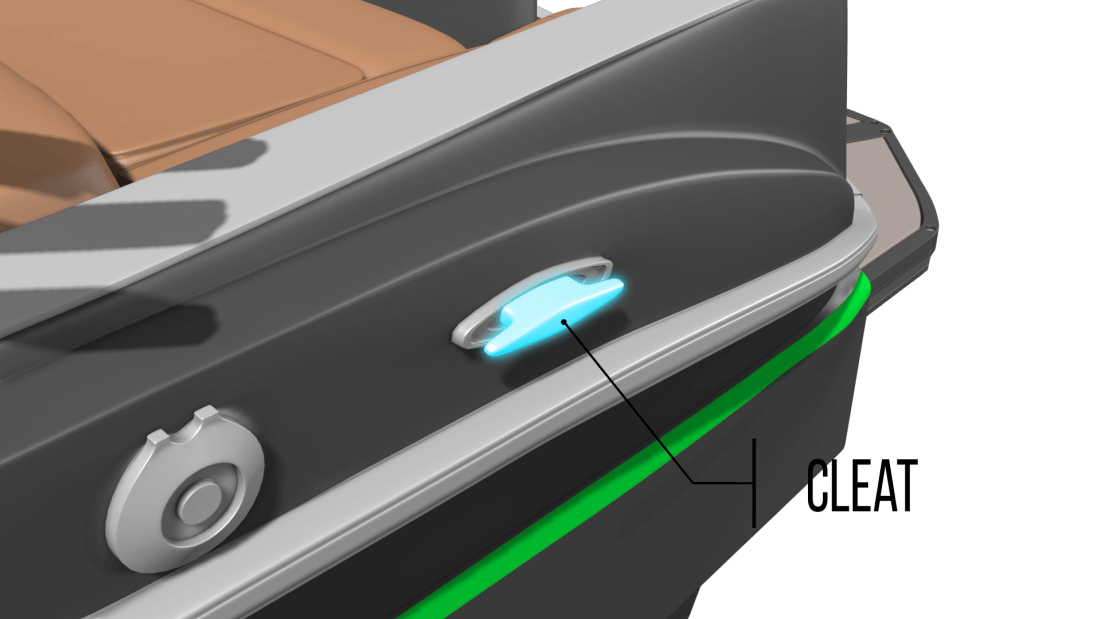
Deck of a boat
The deck of a boat is the flat, horizontal surface that forms the main floor or platform of the vessel. It provides space for passengers, crew, and equipment, while also strengthening the hull and protecting interior compartments from water and weather.
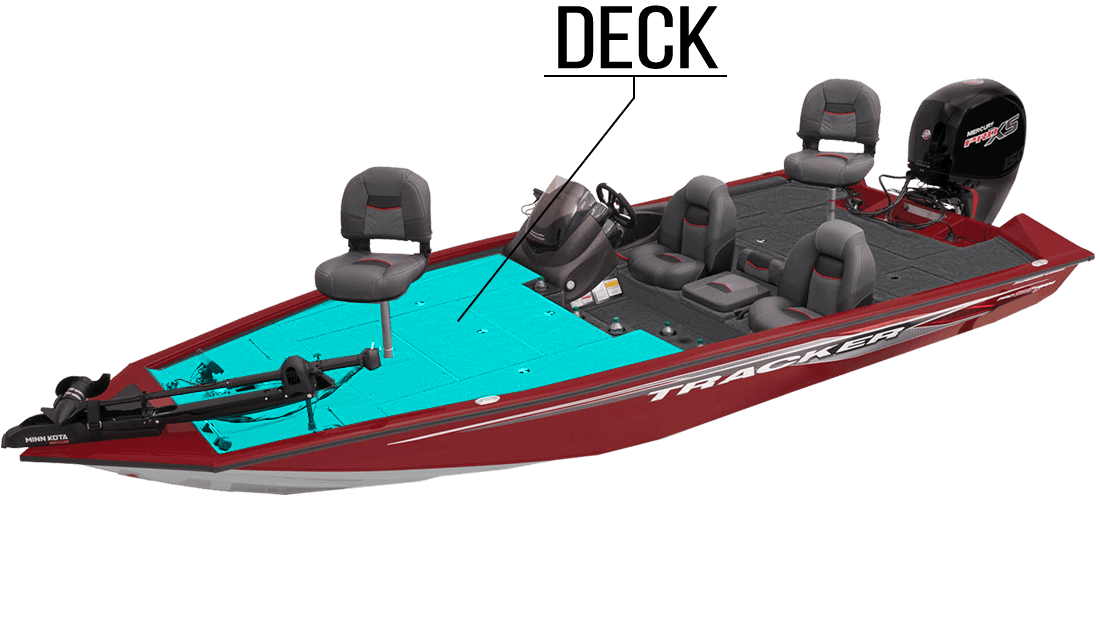
Ballast
Ballast is the extra weight you add to the boat to make it heavier so it displaces more water, which helps create a larger wake for surfing or wakeboarding.
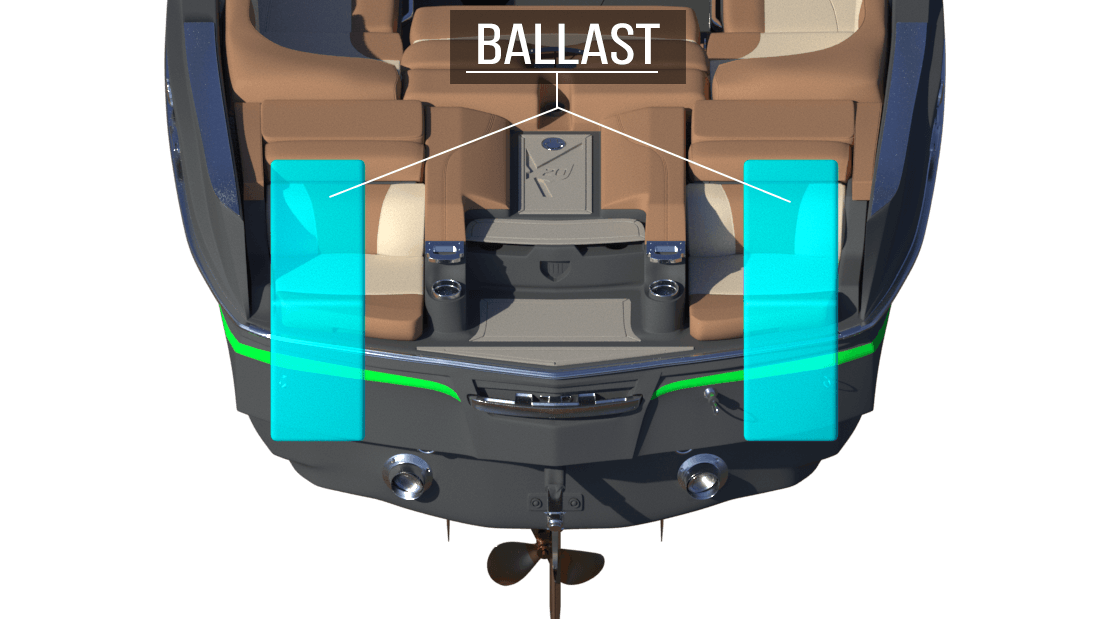
Bilge
Located at the lowest point inside a boat, the bilge serves as a reservoir for collecting excess water. Equipped with a pump, this essential component works to eliminate accumulated water ensuring a dry and safe vessel.
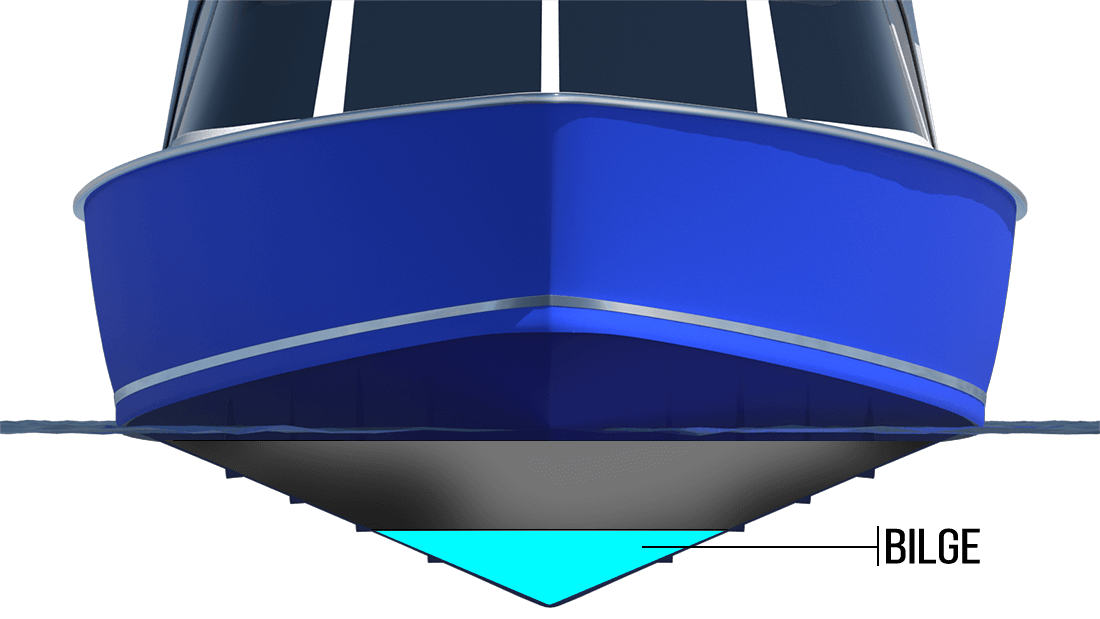
Bimini
A Bimini is a canvas or composite (hard) top that is affixed to a boat that provides shade and protection from the sun and rain.
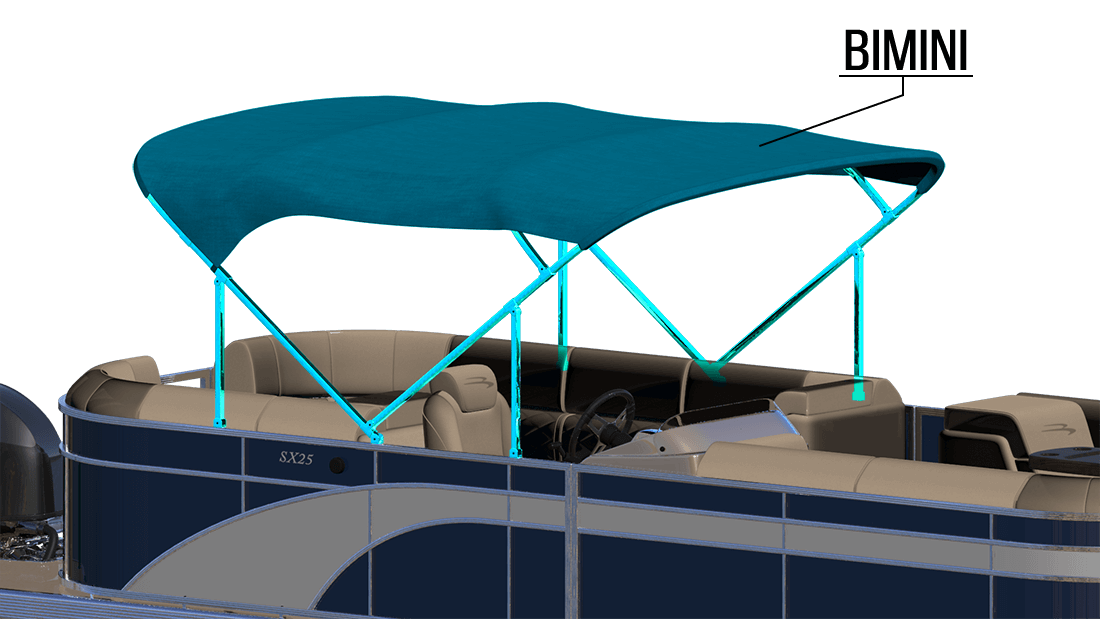
Navigation lights
Navigation lights are the colored lights displayed on boats and ships at night or in poor visibility to indicate their position, direction, and status to other vessels. Typically, a red light marks the port (left) side, a green light marks the starboard (right) side, and a white stern or masthead light shows the vessel’s orientation. These lights help prevent collisions by allowing mariners to determine a vessel’s type, size, and relative movement on the water.
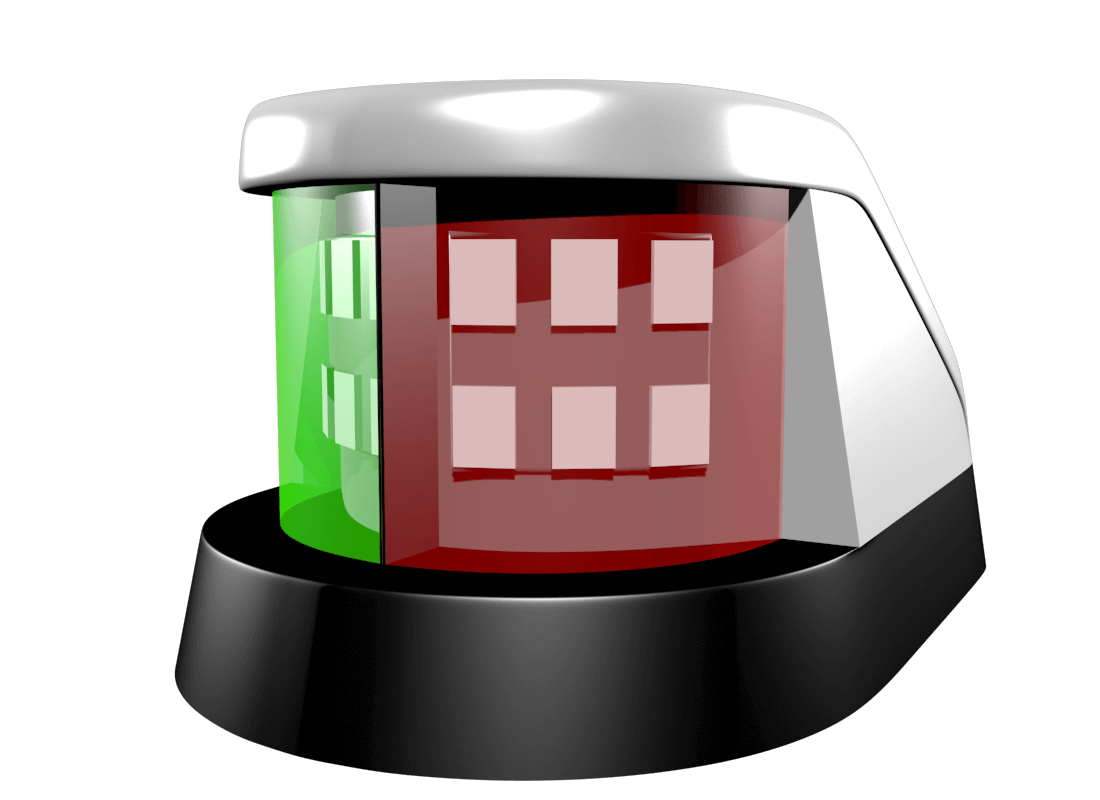
wake
A wake is the wave pattern or disturbed water created behind a moving boat or vessel. As the hull moves through the water, it displaces it outward and backward, forming waves that can affect nearby boats, shorelines, and swimmers.
Wash
Wash refers to the turbulent water and waves caused by a boat’s propeller or hull movement. Similar to a wake, wash can erode shorelines, damage other vessels, or endanger swimmers, so operators must reduce speed near docks, marinas, and no-wake zones.
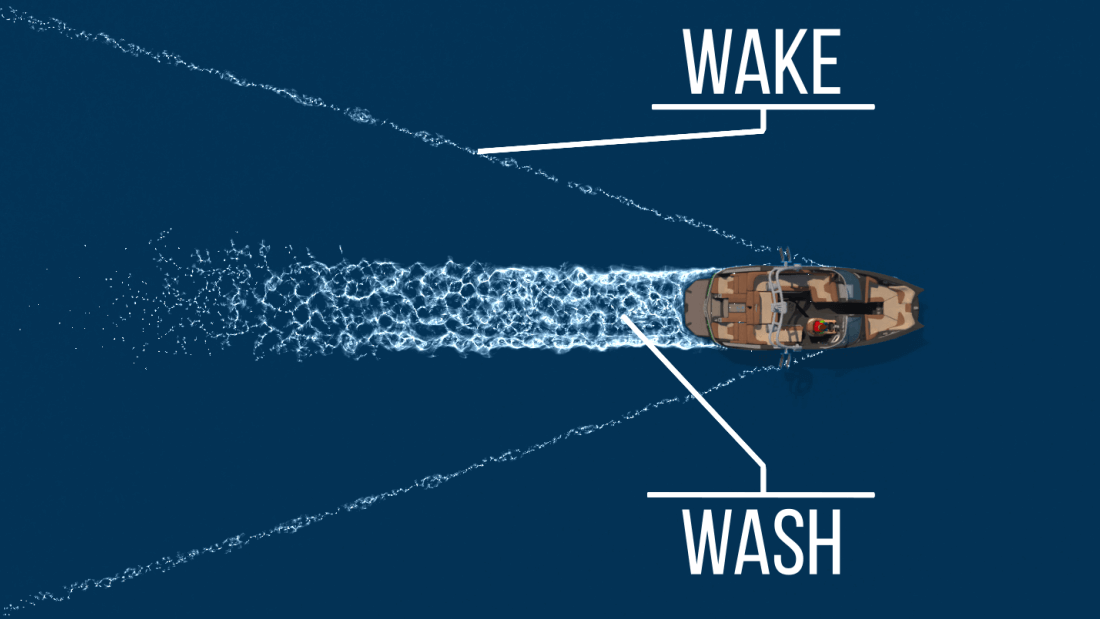
Stand-on vessel
A stand-on vessel is the boat that has the right of way under navigation rules. It must maintain its course and speed when approaching another vessel to allow the give-way vessel to take action and avoid a collision. However, the stand-on vessel must still act if danger develops.
Give-way vessel
A give-way vessel is the boat that must take early and clear action to avoid a collision when approaching another vessel. It must alter course, slow down, or stop to safely pass, yielding to the designated stand-on vessel under navigation rules.
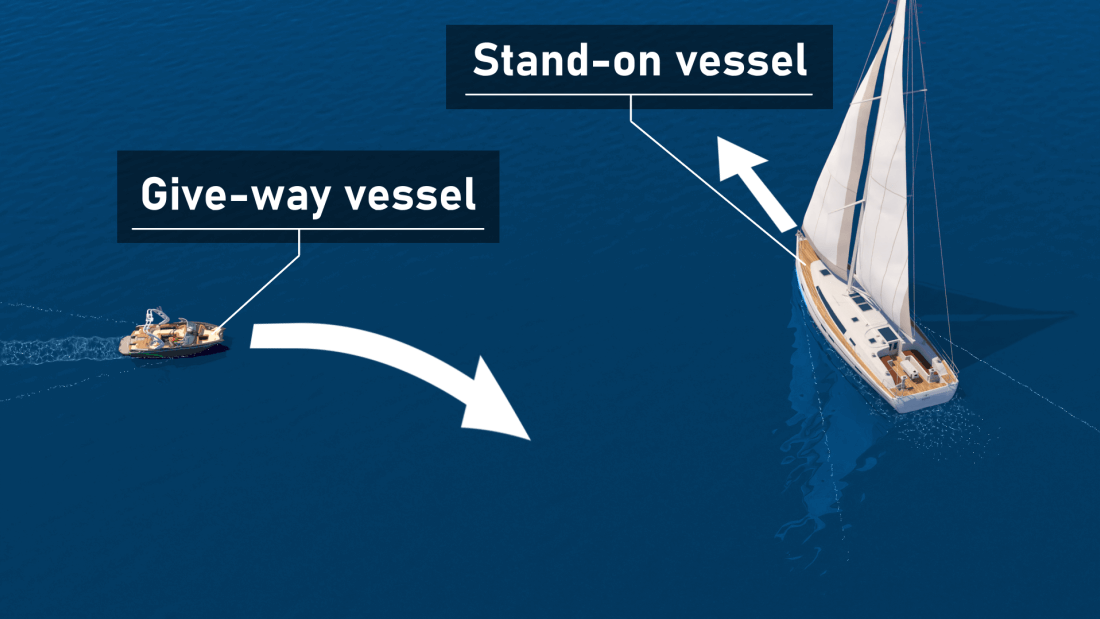
Pleasure craft
Means a boat, a ship, a vessel, or any other description of a water craft that is used exclusively for pleasure, and does not carry passengers or goods for hire, reward, remuneration or any object of profit.
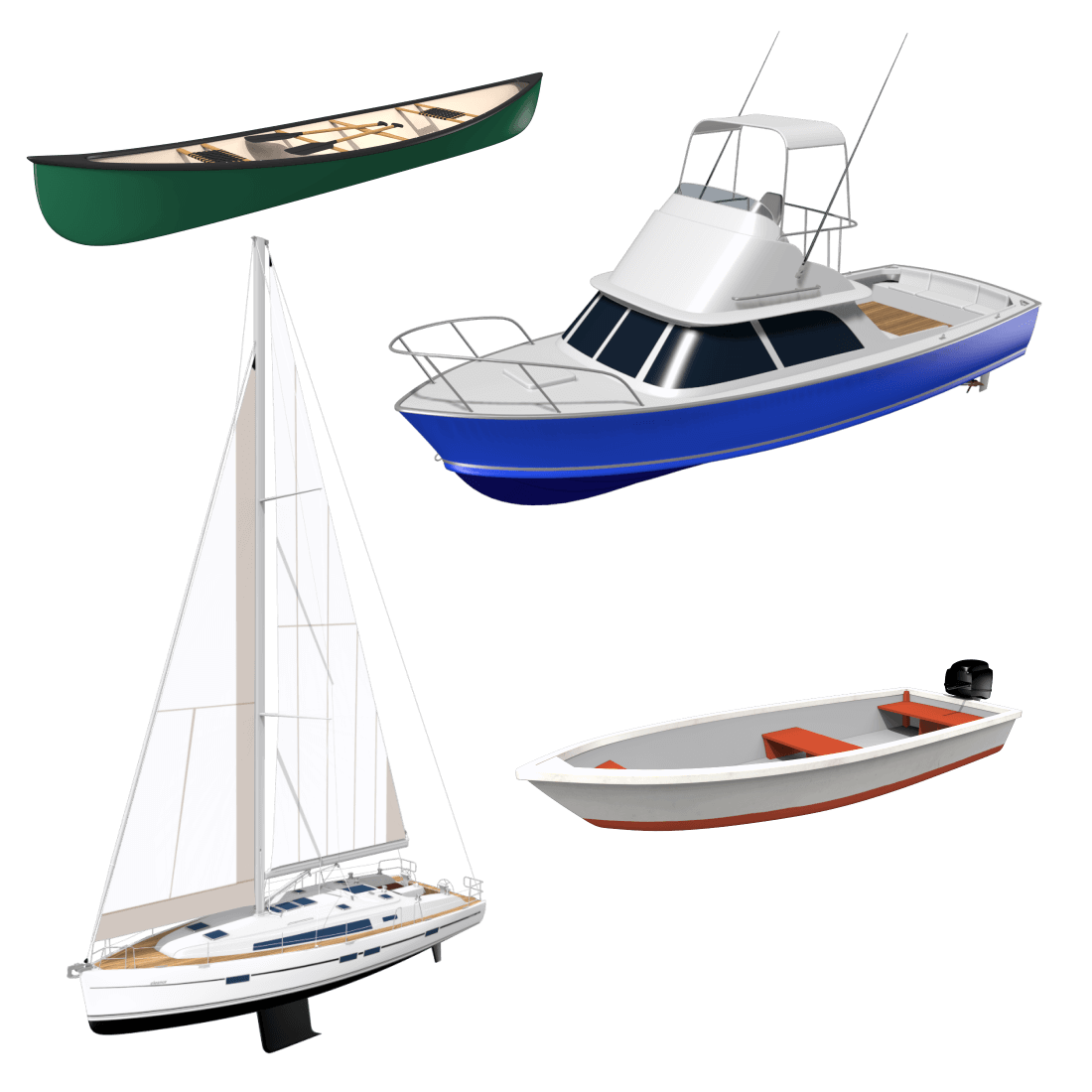
Power-driven vessel
A power-driven vessel is any boat or ship propelled by mechanical means, such as an engine or motor, rather than by wind or paddles. It includes motorboats, yachts, and ships that rely on fuel or electricity for movement and navigation control.
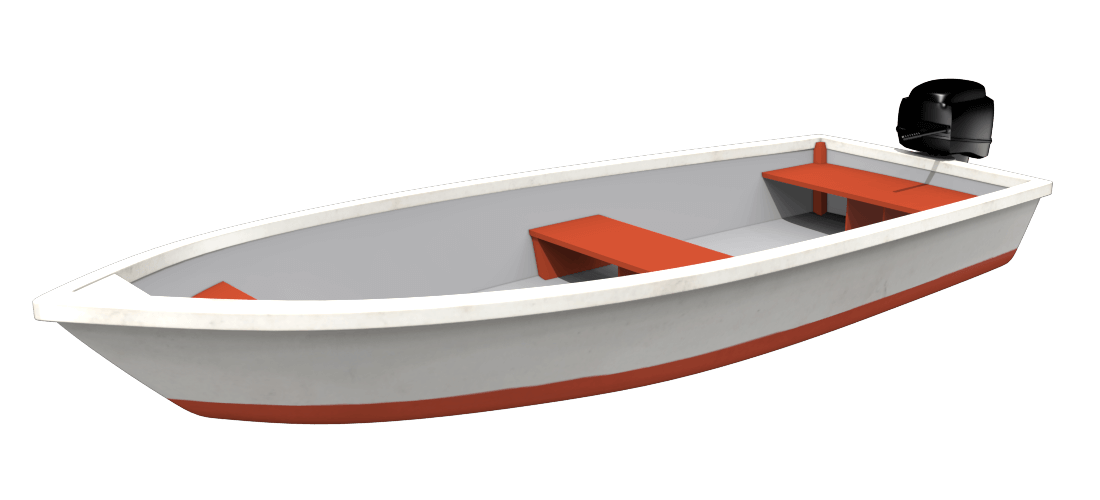
Sailboat
A sailboat is a watercraft propelled mainly by wind using one or more sails mounted on masts. It converts wind energy into forward motion through the sails, allowing navigation across lakes, rivers, or oceans with minimal engine or manual power.
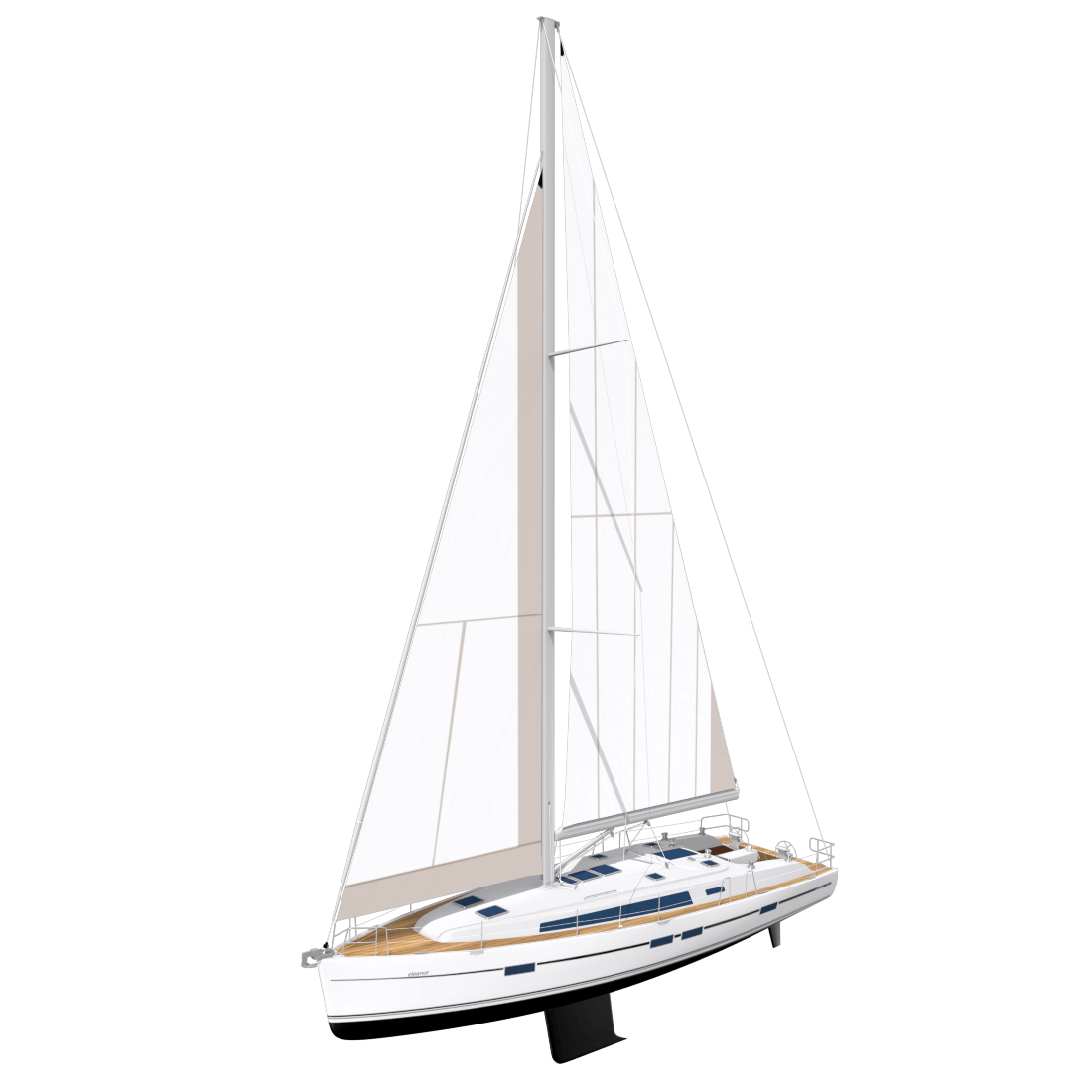
Paddleboard
A paddle board is a wide, buoyant board used for stand-up paddleboarding (SUP) — a water sport where the rider stands, kneels, or sits on the board and propels forward using a long, single-bladed paddle. Paddle boards offer balance, fitness, and fun on lakes, rivers, and coastal waters for all skill levels.
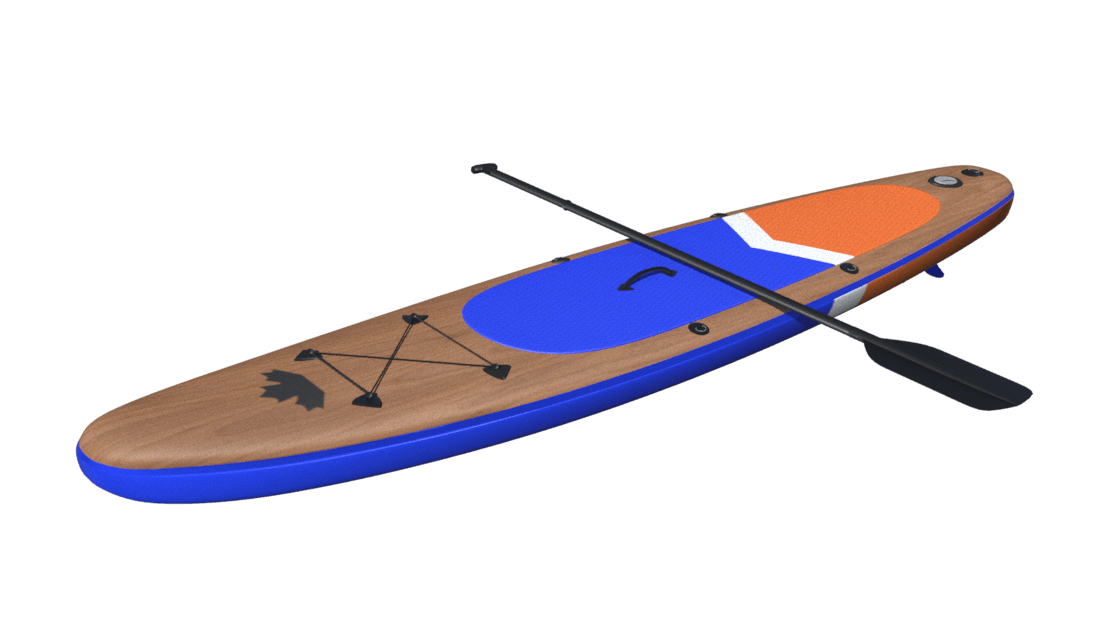
VHF
VHF stands for Very High Frequency, referring to the radio frequency range between 30 and 300 megahertz (MHz). In boating, VHF marine radios are used for communication, navigation, and emergency calls, allowing vessels to contact other boats, marinas, and the Coast Guard on designated marine channels.

How does a boat float
A boat floats because of buoyancy, the upward force exerted by water that opposes gravity. When a boat’s hull displaces a volume of water equal to its weight, the buoyant force keeps it afloat. Its shape and air-filled interior lower its overall density below that of water.
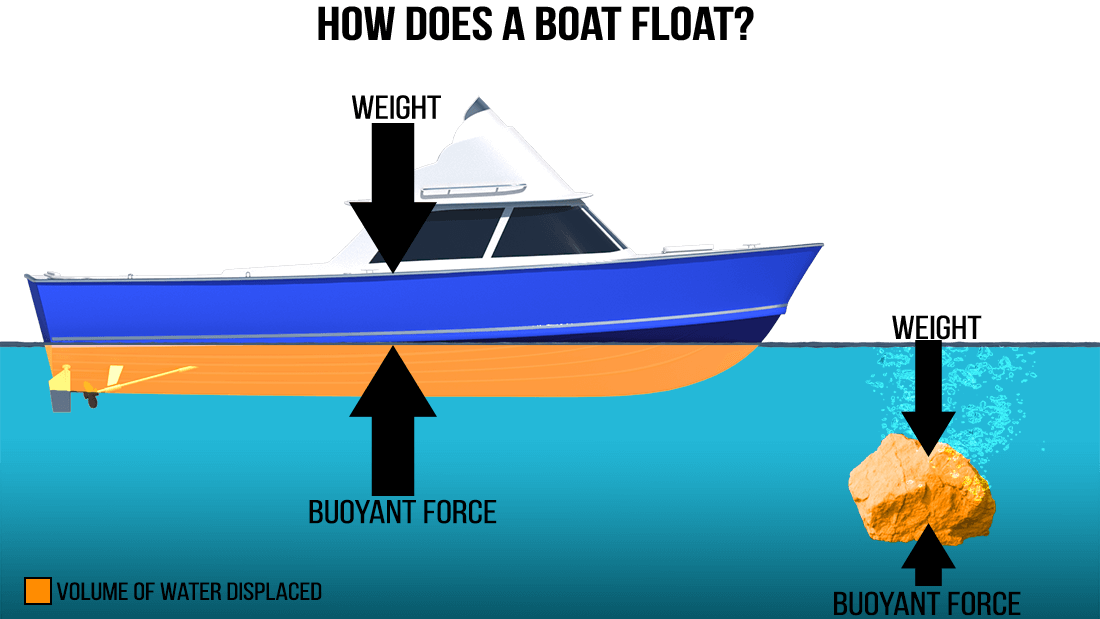
Marine sanitation device
A Marine Sanitation Device (MSD) is equipment installed on boats to treat, store, or dispose of sewage safely. Required by law on many vessels, MSDs prevent pollution by either holding waste in tanks or treating it before discharge in compliance with environmental regulations and no-discharge zones.

All types of boat
Boats come in many types, each designed for specific purposes. Sailboats use wind power and sails for propulsion, while powerboats rely on engines. Fishing boats are equipped for catching fish, and pontoon boats provide stable platforms for leisure and family outings. Kayaks and canoes are human-powered, ideal for calm waters. Jet boats and personal watercraft (PWCs) use jet propulsion for speed and maneuverability. Houseboats offer living accommodations, and dinghies serve as small tenders or recreational craft. Yachts combine luxury and performance, often for cruising or racing. Each type suits different environments, from lakes to oceans.
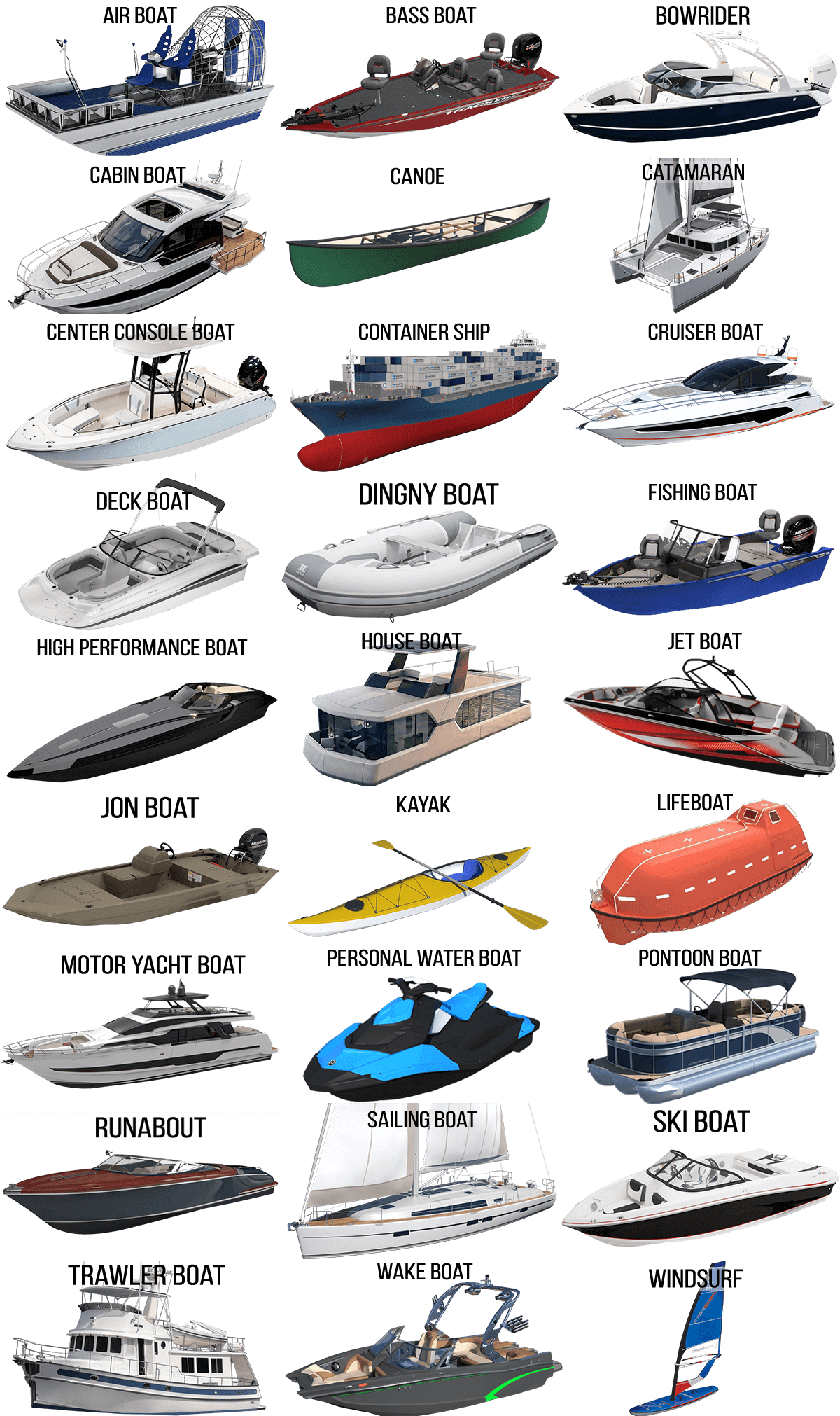
Would you like to learn more about boating safety and be able to drive a boat?
Aceboaters' boating safety course is accredited by Transport Canada to train students on the rules of navigation, buoys and their meanings, boating navigation lights, hazards, how to respond to emergency situations, boating laws and more.
Our course, once successfully completed, will give you the official pleasure craft operator card from Transport Canada, valid throughout North America.
I want my official Canadian boating license.
